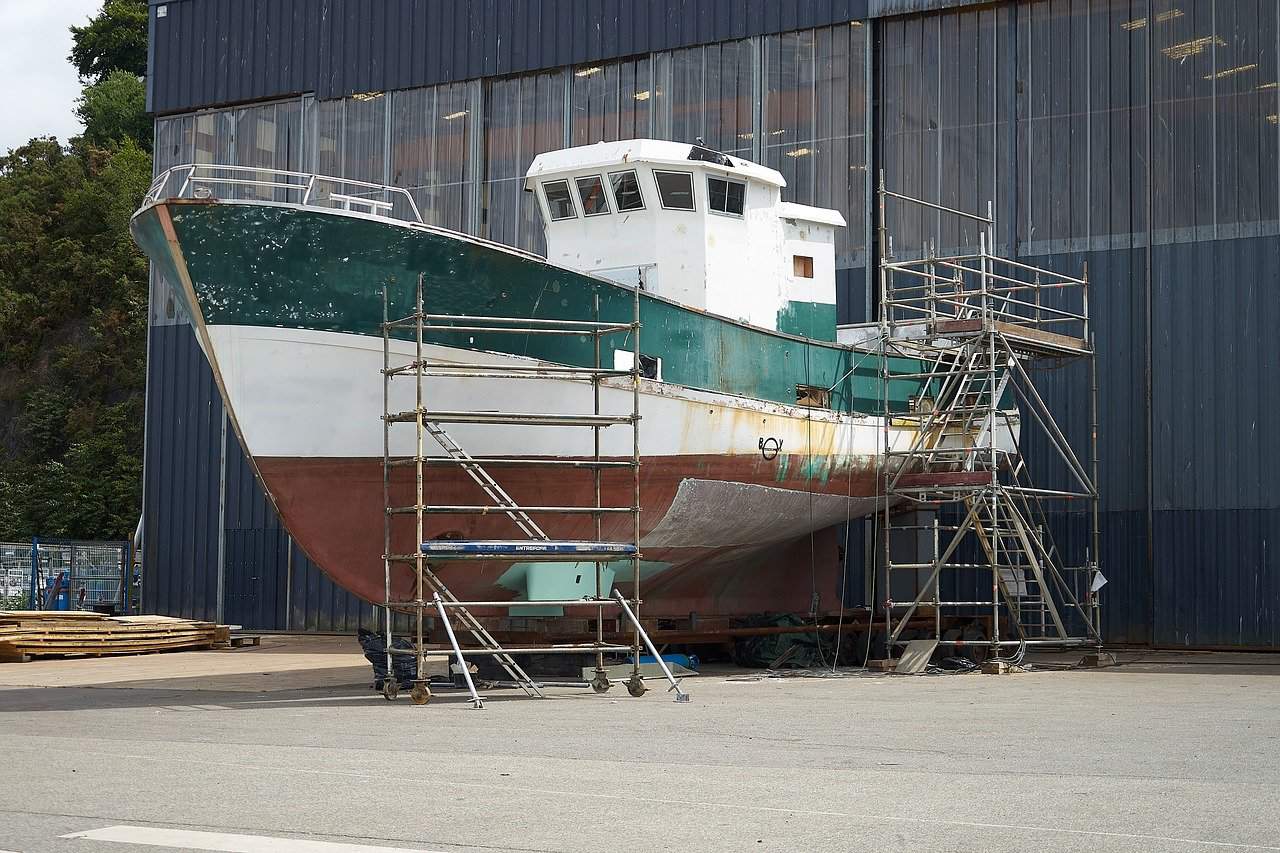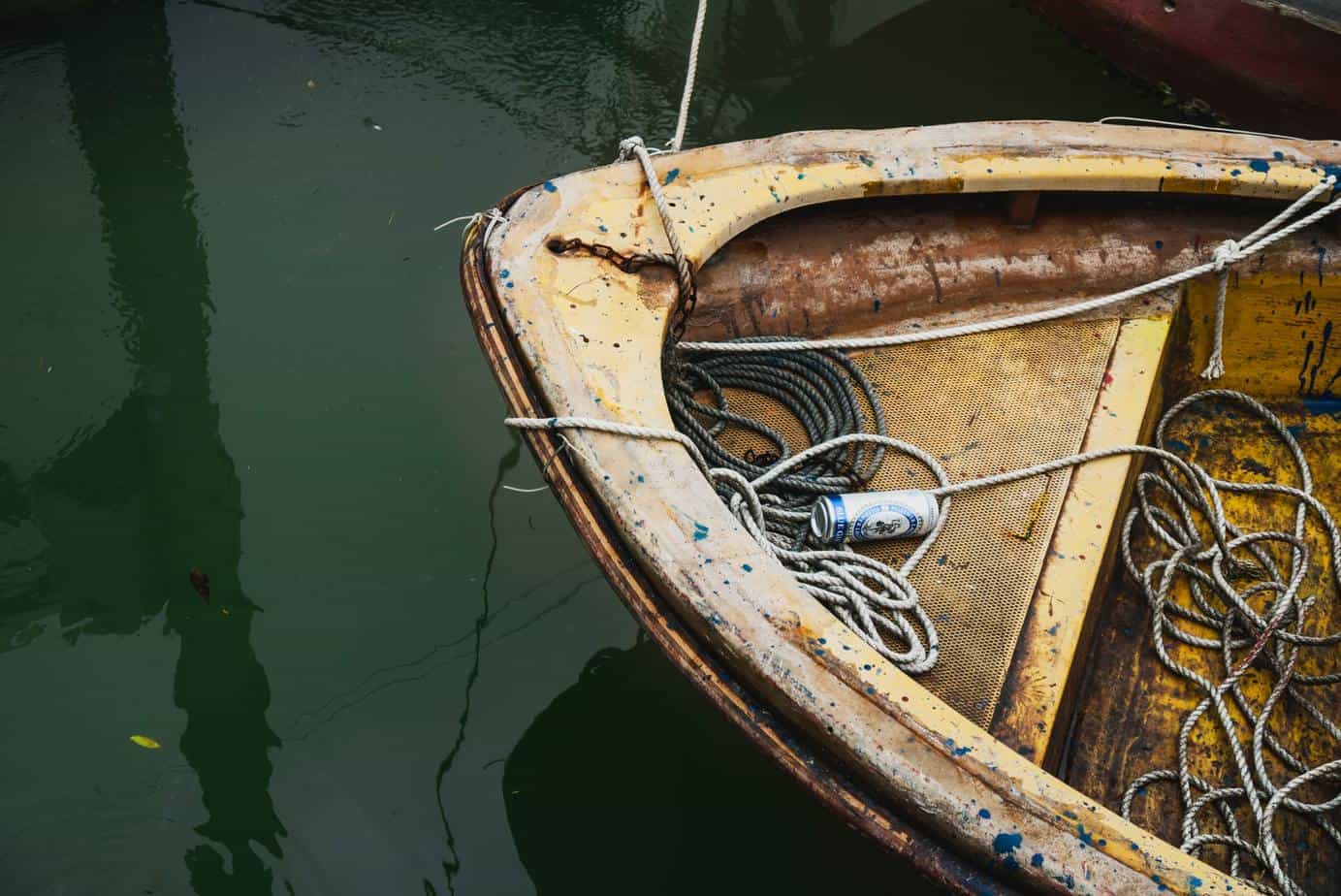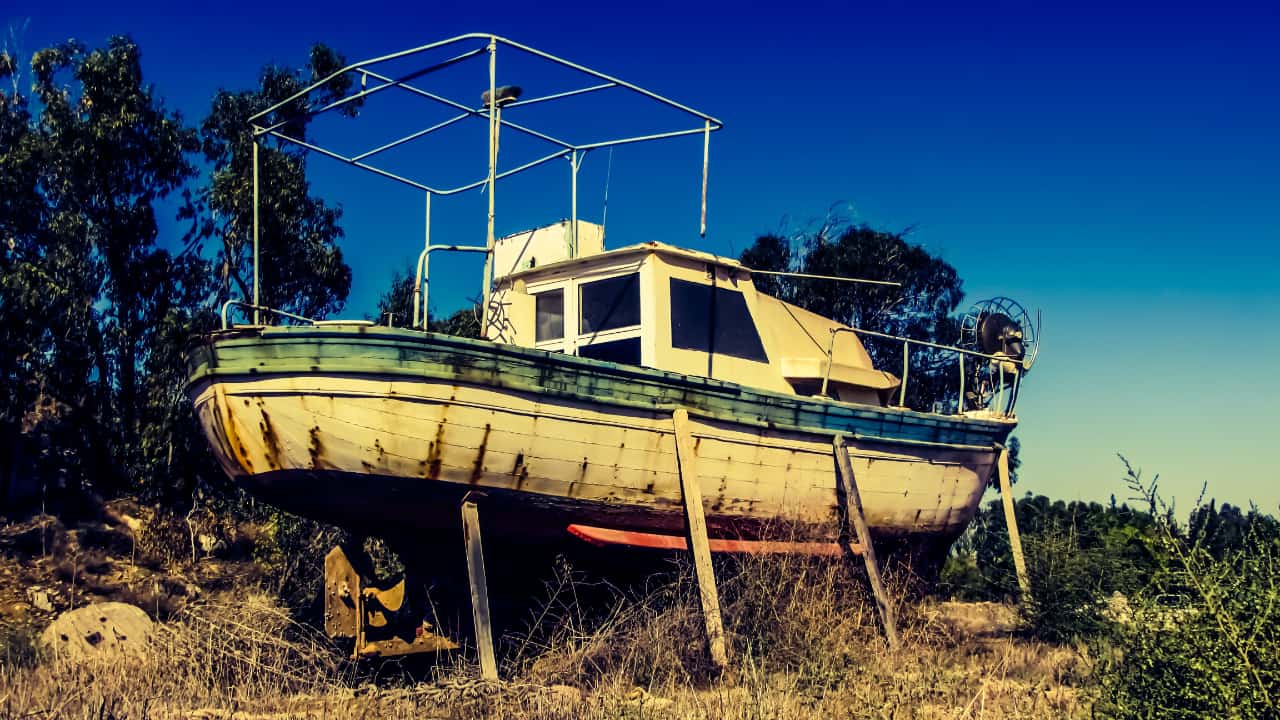- Bilge Pump Float Switch Guide - January 18, 2022
- Best Sand Anchor Options by Boat Type: Our Top Picks! - December 7, 2021
- Cuddy Cabin vs Cabin Cruiser: Breaking Down the Differences - December 2, 2021
Every boatyard has one of them. The boat of broken dreams. The restoration project that went wrong and left behind a disillusioned sailor with an empty wallet. And there the boat sits until you, wide-eyed and bursting with enthusiasm embrace the challenge of making it your dream boat.
Your view is firmly locked on the blue horizon and tropical islands. Here I’m going to fit some blinkers on you and encourage you to stay in the real world. There is an old saying among boat repairers. ‘Do your costing very carefully. Check it twice and then once more. Make sure you have included everything.’ Done that?
Now multiply the total amount by three and that will be pretty close to what you will spend. A restoration project is not for the faint-hearted.
Here I would like to guide you to avoid the pitfalls that so often ensnare the enthusiastic yet naive buyer of a boat that requires restoration.
To undertake a proper restoration, you will have to complete some of the work while the boat is out of the water and then the final stage when the boat is back in the water. Check this carefully. Slipping and relaunching boats can come with a painful price tag.
Making an offer for a boat lying in the water is a risky business and something to be avoided. It is nice to know that the boat is floating but I would delay making any offer or restoration decision until the boat is on the hard. Making an offer dependent upon final inspection after the boat is on the hard is a sensible course of action.
How Much?
What to leave alone and where to begin is the first issue to decide on. The timing couldn’t be worse. You have just been introduced to the boat and now you have to make decisions without any guidance. Enthusiasm is at a peak together with energy levels and you can’t wait to get going. Stop for a break. During this break, there is only one question you need to answer. ‘How much is this boat worth to me?’ That is the true worth of the boat. Not what the seller thinks it’s worth. Not the value of all the equipment. Just what you think it’s worth.
Sellers have an inflated opinion of what the boat is worth. Buyers have minimalist ideas of how much the boat will take to renovate.
Start with a list. Leave everything as it is and just make three lists. List one, what is broken, list two what looks a little shakey, and three what seems to be ok.
Now go through the lists and make your priority what affects the integrity of the boat. These are going to be items that are going to prevent you from using the boat until they are fixed.
So now you have a list of the first things to address. Now make this list your focus. Be strict on yourself and don’t deviate from this list unless something of critical importance arises. This is the list that is going to get the boat back into a useable condition and now is the time to make some comparisons.
How Much For a Better Boat?
Having gone through the boat and made your list of things that need to be repaired you can get a pretty good idea of what it will cost to get the boat into the water and for you to enjoy it. It doesn’t matter that the cushions are looking tatty or that the paintwork requires some attention. You just want to fix a price on getting the boat into a condition where it can be used.
Now have a look around at what type of boat can you get for the price you are wanting to offer on this boat and add the total from your list of things that are immediately in need of repair. Call this the ‘Renovation price.’
The comparison is: Your intended purchase plus cost of critical list repairs vs. Another boat of a higher price but no list of repairs.
You would be better off with the latter almost every time.
You Have Done Your Sums Looked Around And Still Want the Renovation Boat. What Now?
Unless you have a wealth of experience in most facets of boat construction, the best thing to do is to get someone to survey the boat for you. The survey is going to cost you a fair amount of money but it just may save you a huge amount of money and frustration.
A mate with a lot of sailing experience may charge you nothing and his or her opinion is worth a lot because there is no emotional content but a professional survey carries a whole lot of clout especially when it comes down to the realistic cost of repairs.
And here comes another golden rule of boat renovation and purchase. Always be prepared to walk away. There is always another boat to have a look at. Spending a little extra time and travel can save you a lot of tears down the line.
Here Is Another Concept to Clear up Before You Start
Avoid the mistake of thinking a renovation is going to get you a new boat. If you want a boat that is perfect and new well then best to buy a new boat. A renovated boat is going to have some parts that are old and show their age. That can also be a good thing and add character to a boat. There is a certain charm about a vessel with some age on her. Check the prices of traditional boats in great condition. They do command a good price.
And new is not all it is set out to be. Leave things alone that work. Unless there is a compelling reason to strip and replace, rather don’t. This is not to say ‘Wait till it breaks’ and then attend to it but in many instances, things like pipework or wiring will continue to function adequately for the foreseeable future and only need attention when new equipment is fitted.
So unless you are happy with a boat that is not quite new perhaps the renovation dream is not going to be your best bet.
What Can You do Yourself?
This is an important question to address. There is a heap of tasks in the restoration realm that requires little skill but a huge amount of stamina and perseverance. Sanding down a hull is one that comes to mind. It is a boring unpleasant job that takes hours, makes your arms ache, and has the annoying tendency of highlighting every error you made in the process.
In much the same way fairing a hull is a painfully exacting task. It is a slow process using expensive materials and unless you possess a great amount of attention to detail it may be better left to the professionals. However, you will save a huge amount of money doing it yourself.
Cleaning out the bilges is another favorite. It is smelly, dirty, and uncomfortable with some areas specially designed to tie you up in knots and force you into positions that your body was never designed for.
But these are jobs you can do yourself and they are also ones that you should make every effort to complete. Doing them will compel you to investigate every inch of the boat and that is a very necessary process to make a success of your renovation.
Keep the Boat Operational
There is nothing worse than a perfect day, your mates are out on the water and your boat is stuck in the middle of your renovation process. So wherever possible keep the boat in a condition that, if the weather is fantastic, you can use the boat to have a great day out on the water.
This leads up to another point to keep your eye on. Having a boat on the hard is a lot more expensive than in the water. So the clever thing to do is to get the work that requires the boat to be out of the water done as quickly as possible. Here is a brief list of items that require completion while the boat is out of the water.
- Check stern glands
- Check stuffing box for prop and rudder
- check through-hull fittings
- check and replace anodes if necessary
- clean hull and apply antifoul
- paint hull
- check propellor
- for older steel hull vessels a thickness test survey may be worthwhile. This should be done prior to painting.
There is nothing that makes a tired old boat spring back into life as a new coat of paint on the hull and a fresh coat of antifoul. It is something I would put up near the top of things to do as it will bring a little happiness to your heart when you see the bright and shiny hull as opposed to the dull and scratched version you recently bought. So a good paint job together with an accurate boot topping and fresh antifoul and you are ready to hit the water.
We Started Off on This Article by Saying Every Boatyard Has One
I hope that using these tips will help you avoid being the owner of the ‘one in every boatyard.’ Buying a boat is expensive but it is just as important to understand that running a boat is just as expensive. Marine equipment is expensive. In fact, most things about a boat tend to be expensive so do your budgeting carefully. Boats can be a huge amount of fun but there is a balance. When the financial burden of owning a boat becomes heavy and painful, the joy of being on the water tends to fade.
A possible solution is to take on a partner for the boat. Someone who can share in the financial responsibilities. Some partnerships work and then there are also the horror stories of the ones that don’t. So tread carefully in this realm but all things considered, it may just be the arrangement that makes owning a boat so much more enjoyable.
I have spent more years than I would like to count messing about on boats. Would do it all again? Oh yes. The thrill of a tiller in your hand and heading out on a boat that absorbed so many hours of sweat and hard work. That is the stuff that dreams are made of. I truly hope that you will savor your dream.
FAQs
Answer: This is largely a question of what material you feel most comfortable with. Someone with good woodworking skills would head towards a wooden boat while someone with fiberglass skills will see flaws in a glass hull as easily repairable. Steel and aluminum hulls require a more specialized skill but for those who can weld and work with metal that may be the way to go.
Fiberglass hulls are the most common type found so that makes finding experts to undertake repairs that much easier. Fiberglass is relatively easy to patch whereas the other materials do require a little more expertise.
Remember that fixing the hull is but a small part of the overall renovation. Pipework, electrics, and electronics together with pneumatics and hydraulic systems are all part of the renovator’s to-do list.
Answer: Free boats should come with a cacophony of alarm bells. Taking over a free boat may appear to be an opportunity not to be missed but then is it really? Some things to check up on are firstly whether there is any money owing to the boatyard or marina where the boat is located.
Secondly check on the registration of the vessel and whether the person giving the boat away is actually the owner of the vessel. It may come as a shock that after undertaking an expensive and labourious renovation the true owner turns up. It may also be a good idea to check with the port authorities in some countries where visiting boats are obliged to pay port dues. If any port dues are payable the vessel will not be allowed to leave port until the debt is sorted out.
Remember the old adage. If it sounds too good to be true. It isn’t.
Answer: The best place to undertake a renovation is inside a shed protected from the elements but that doesn’t happen very often. Normally you will be at the mercy of the elements. You can get around this to some degree by erecting a roof covering over the boat while it is out of the water. Try to make a list of repairs that can be done on rainy days.
Things to consider regarding facilities are the distance in getting to the boat. If it’s just a couple of minutes then it’s worth going out for an hour to do a couple of small jobs. If you have to take an hour to get to the boat that removes that opportunity.
The availability of power is another issue to consider as is the proximity of other boats. Shot blasting or spray painting will instantly make you the pariah of the yard so before you undertake this type of work you should chat to the yard management to see what is permisable.
The availability of electricity, water and sometimes compressed air will all help to speed up your renovation.
The most important facility is the one that gets the boat out and into the water. Make sure you have that sewn up before you begin your renovation. It is the most critical element of the whole renovation process.
Looking for more interesting readings? Check out:






